Introduction to Simplified Logistics
Logistics simplifies the strategic process of optimizing and streamlining every part of the supply chain—from warehousing to inventory, transportation, and delivery—all while restricting costs and complexity.
This comprehensive guide examines the basic principles of simplified logistics, benefits to manufacturers, implementation processes, and more, for 2025 and beyond.
What Is Simplified Logistics?
It can be defined as the practice of simplifying logistics operations through the automation of goods and services, strategic and intelligent planning, and the intelligent management of services, as well as sophisticated transport systems, all while emphasizing speed, accuracy, and cost-effectiveness.
Important Features of Simplified Logistics:
Lean inventory management[sample data; take the time to assess this universal difference.]
Fully automated order processing[certainly fills in the blanks, but could be lifted to a more tangible presentation format]
- Real-time tracking and analytics
- Fewer intermediaries or agents
- Integrated supply chain technology
With the elimination of blocks, manual tasks are removed, and much better communication is established among all parties.
Why Simplified Logistics Is Important in 2025
Rethinking these logistics models is the trend at companies in reaction to increasing customer expectations, as well as prevailing fuel prices and a shortage of labour. Simplified logistics will provide an economic and sustainable solution to keep competition alive.
1. Customer Expectations Are Rising
The modern-day consumer expects one- or next-day delivery, plus what simpler logistics allows for greater speed, reliability, and fulfillment.
2. Reduced Costs
Operation costs are drastically reduced from warehouse layout optimization through automation of repetitive work and elimination of unnecessary steps.
3. Sustainability Goals
It helps reduce fuel consumption and waste, making simplified logistics a contributor to green goals.
Core Components of Simplified Logistics
To successfully implement simplified logistics, businesses need to focus on optimizing these components:
1. Warehouse Management
- Adoption of smart shelving systems
- Automated picking tools
- Warehouse management systems (WMS)
2. Inventory Management
- Optimum shelf stocks
- Just-in-time inventory procedures (JIT)
- AI-based stock forecasting
3. Transportation Optimization
- Route optimization software
- Associated with trustworthy carriers
- Multi-modal transport mode
4. Technology Integration
- ERP and CRM system integration
- Use of IoT and AI in tracking
- Blockchain for transparent transactions
Benefits of Employing Simplified Logistics
A simplified logistics strategy will pay off in the long term:
1. Efficiency Gains
Automation and an optimal workflow will see tasks that once took hours now take minutes.
2. Better Customer Satisfaction
More accurate delivery is faster and has fewer errors, which translates to happier customers.
3. Cost Savings
Less fuel, lighter labor requirements, and small inventory losses add up to cost efficiency.
4. Scalability
Simplification lends itself easily to building upon as your business grows.
5. Better risk management
When visibility is good, companies can respond more proactively to challenges, such as delays in shipment or stockouts.
How to Simplify Logistics Models
Now, let us look at the stepwise procedure for implementing a simplified logistics model in practice:
Step 1: Assess Your Supply Chain Today
Review all ongoing processes. Locate bottlenecks.
Step 2: Define Your Key Goals
What do you want to see achieved, e.g., cost saving, lesser delivery time, tracking of inventory, or customer satisfaction? Then decide.
Step 3: Select Acceptable Technology
For example, implement:
- Inventory management systems (IMS);
- Order management software (OMS);
- GPS and telematics for fleet management.
Step 4: Team Training
Train the employees to enhance their skill set of the employees to work with the new systems and automation tools.
Step 5: Monitor and Optimize
Track important indicators such as delivery time, order accuracy, and cost per order. Use this information for continuous improvement.
Real-Life Cases of Simplified Logistics
Example 1: Amazon
Amazon simplified border-crossing delivery through robotics, artificial intelligence, and predictive analytics, making its fulfillment network accessible.
Example 2: Zara
The fashion giant works on a fast-fashion model, with simplified logistics allowing new collections to reach stores within 2 to 3 weeks of design.
Example 3: DHL
DHL uses drones, autonomous vehicles, and route optimization tools to deliver packages quickly and reliably.
Automated Simplified Logistics
Automation is a major factor in any simplified logistics ecosystem. From smart conveyors and robotic arms in warehouses to AI-powered route optimization, the purpose of automation is to reduce manual labor and increase speed.
New Technologies Transforming Logistics:
- Drones and UAVs for last-mile delivery.
- RFID and barcodes for real-time tracking.
- Autonomous trucks for long-haul routes.
- Chatbots and AI assistants for customer support.
Simplified Logistics for the Small Entrepreneurs
You may not be a multi-million dollar Fortune 500 company to benefit from simplified logistics. The technology in simplified logistics is also made available to the small and medium enterprises (SMEs).
Budget-Friendly Tips:
- Outsource logistics to third-party logistics (3PL) providers.
- Use cloud-based inventory tools.
- Partner with local carriers for last-mile delivery.
- Automate invoicing and reverse deliveries.
Simplified Logistics Implementation Challenges
Alongside benefits, here are some obstacles to implementing simplified logistics:
1. Very High Initial Investment
The cost involved in setting up automation and software tools is usually very high.
2. Integration Problem
All systems have to be matched to connect each operation.
3. Cybersecurity Risks
A digital logistics framework will always imply the risk of a security breach.
4. Change Management
Employees may not agree to use or accept new standards for technologies or procedures.
Future Trends Ahead Afield in Simplified Logistics
1. AI-Engined Predictive Logistics
AI will project demand while at the same time optimizing inventory and return reduction.
2. Supply Chain Transparency through Blockchain
Blockchain would ensure that transactions are safe and traceable.
3. Green Logistics
There are electric delivery vans and biodegradable packaging as the new standard.
4. Hyperlocal Fulfillment Centers
Local mini-warehouses will be invested in by companies to facilitate ultra-fast delivery.
Simplified Logistics and Pure Logistics
Feature Traditional Logistics Simplified Logistics
Manual processes: Very high, Extremely low
Technology Integrated Limited Extensive
Cost efficiency Medium High
Flexibility Low High
Speed of delivery Slower Faster
Best Tools to Simplify Logistics in 2025
Some of the highly-rated logistics tools include:
- ShipBob – warehousing and fulfillment
- Zoho Inventory – inventory tracking
- Route4Me – route optimization
- NetSuite ERP – integrated supply chain management
- Logiwa – an AI-based order fulfillment tool
Simplified Logistics in E-commerce
In e-commerce, simplified logistics is the backbone of success. Here are the relevant key strategies:
- Automated order processing
- Same-day shipping options
- Integrated return management
- Customer tracking portals
Online stores have fewer cart abandonments due to simplified logistics, more repeat purchases, and lower operational costs.
Global Impact of Simplified Logistics
It is much more than a simple business tool. Countries that adopt simplified processes would have increased GDP growth through a more efficient import and export mechanism. It would ease international shipping and speed up customs processing, making trade compliance much more apparent.
How to Choose the Right Logistics Partner
Choose a reliable logistics partner with industry experience and:
- Technology stack
- Transparency and communication
- Services flexibility
- Cost-effectiveness
Look for end-to-end service providers with traffic channel simplification.
SEO Best Practices for Logistics Companies
If you are a logistics provider, then simplified logistics should be an important aspect of your digital strategy. Here are SEO tactics:
Keyword Strategy
Attach words such as:
- Simplified logistics solutions
- Streamlined supply chain
- Smart inventory control
- Automated fulfillment
Conclusion
With it, the tools, strategies, and technologies mentioned here are Trustworthy to make your supply chain lean, cheaper, and provide more value to customers.
FAQ
Q1: What does simplified logistics mean?
It means optimizing the supply and distribution chain to minimize complexity, costs, and delays through smart technologies and lean strategies.
Q2. Would simplified logistics be suitable for small businesses?
Yes. So many affordable tools and even third-party services for simplified logistics are available for SMEs.
Q3. Which tools are the best for logistics optimization?
Among the popular tools are NetSuite, Zoho Inventory, Route4Me, and ShipBob.
Q4: What is the biggest simplified logistics advantage?
Deliver more products at a faster and lower cost while increasing satisfaction for customers.



